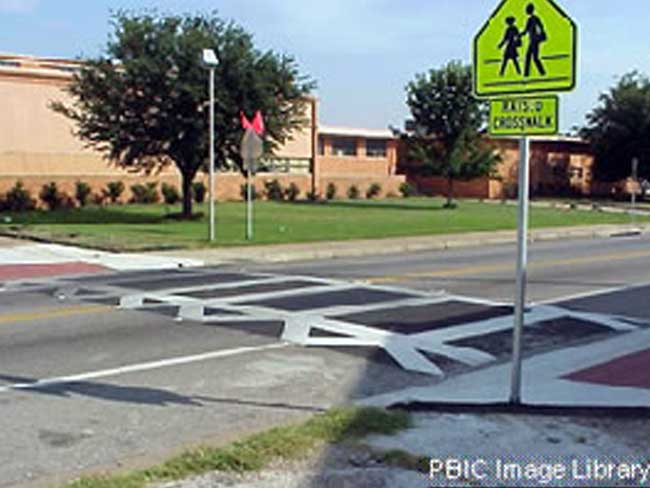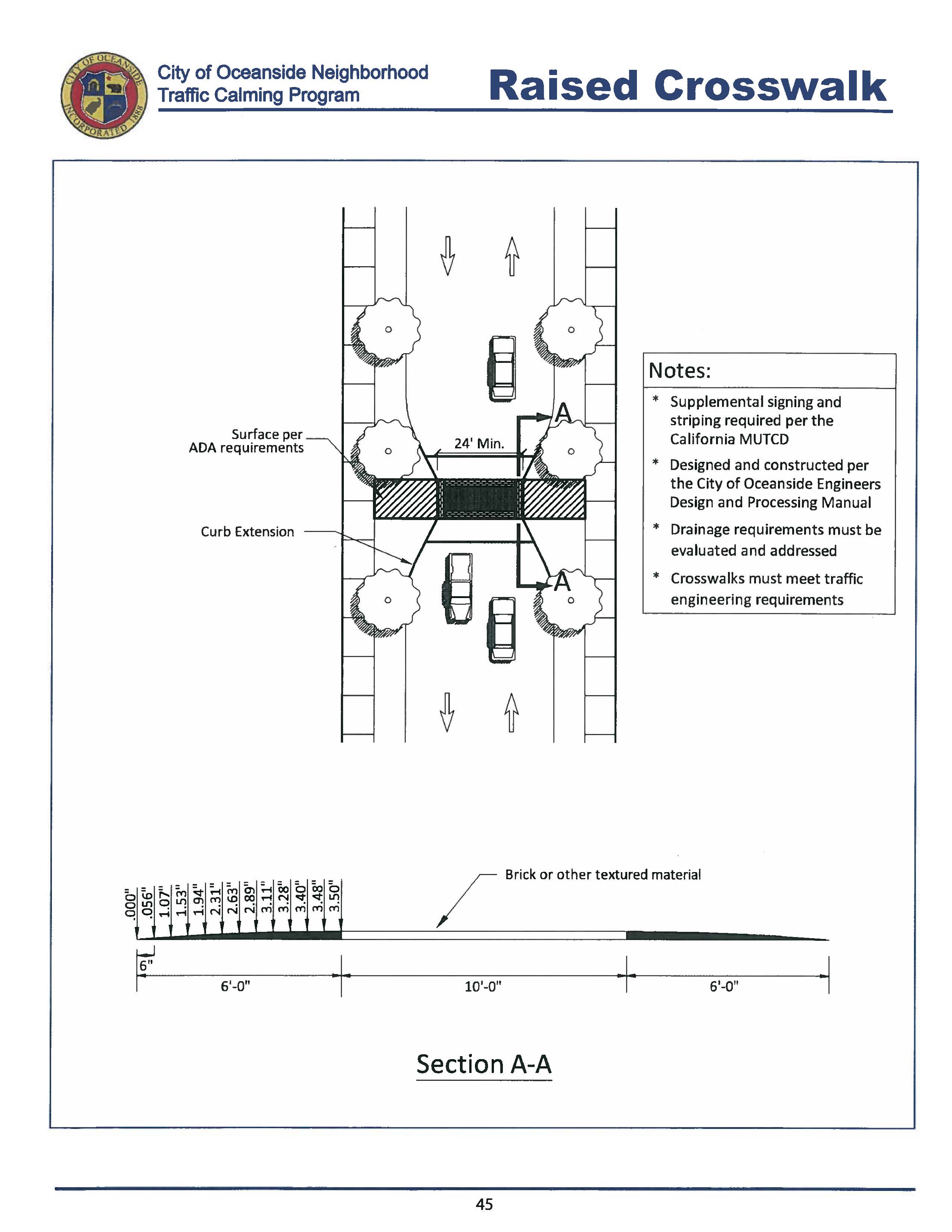Device name(s): Raised Crosswalks/Speed Tables
Approximate Cost: $2,500 – $15,000
Definition: A raised crosswalk is a flat-topped speed hump that requires motorists to reduce speeds as they proceed through the elevated section of the road. Raised crosswalk/speed tables are gradual changes in the roadway surface usually 22 feet long and 3.5 inches high Speed tables have little affect on the vehicle driving the posted speed limit or slower, but can produce discomfort when the speed limit is exceeded. Raise crosswalks/speed tables are designed to allow snowplows to smoothly transverse them with no significant impedance. It is not necessary to prohibit parking at on the raised crosswalk/speed table, although adjacent residents may feel uncomfortable parking on it. Raise crosswalk/speed tables have been effective at reducing speed by an average of 18% ( from an average of 36.7 230.1 mi./h) and reducing accidents by an average of 45% (from an average of 6.7 to 3.7 accidents per year).
Fast Facts:
- Can be used on Local Street- yes
- Can be used on Collector- yes
- Can be used on Arterial- no
- Reduces Speed- yes
- Reduces Volume- possible
- Noise Impact- yes
- Restricts Access- no
- Bicyclist Impact- no
- Transit Impact- no
- Parking Impact- possible
- Emergency Response Impact- yes
Advantages:
- reduces speed (37 mph)
- improve motorists visibility of pedestrians
- clearly designate the crosswalk
- self enforcing
- relatively inexpensive
- parking allowed on device
- does not generally affect drainage
- improve safety for both pedestrians and vehicles
- Cant have positive aesthetic value
Disadvantages:
- increases regular maintenance
- may require modifications to drainage
- may cause loss of parking
- may cause vehicle deceleration and acceleration noises
- may cause motorists speed up after crosswalk
- increases response time for emergency vehicles
- some discomfort for short wheel-based vehicles
- textured materials, if use, can be expensive
- may increase noise and air pollution
- difficult snow removal
Criteria/Application(s):
- effective in reducing speeds though not to the extent of the speed pump
- raised crosswalk/speed tables are most effective if used in a series; space 300 to 500 feet apart
- 85th percentile speed is 32 mph or greater
- 70% of households in affected area must support
- locations where pedestrian crossings occur at unexpected locations and vehicle speeds are excessive

